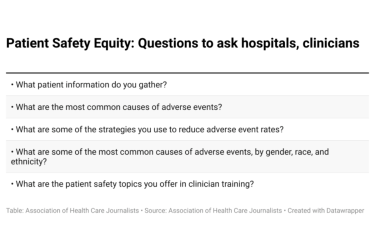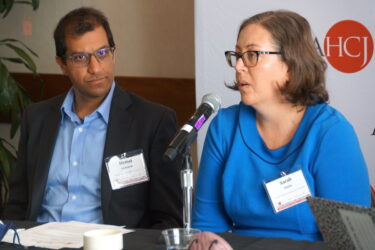
Want to know more about innovative dental care programs reaching rural areas? Curious about oral health disparities in isolated communities? Looking for rural health contacts, programs or statistics for your state?
You might want to check out a Rural Oral Health Toolkit just launched by the Rural Assistance Center, a rural health information portal established by the U.S. Department of Health and Human Services’ Rural Initiative.
The toolkit is primarily geared toward helping rural communities set up successful and sustainable oral health programs. But it might just as easily serve as a source of story ideas and background for journalists covering rural places.
On the site you can learn about initiatives such as the “Into the Mouths of Babes” program. It addresses the shortage of Medicaid dentists in rural North Carolina by training physicians to apply fluoride varnishes to the teeth of small children.
You also can find out more about mobile clinic programs that have been successfully bringing screenings, education and care to children in isolated communities from Louisiana to South Dakota. There are school-based, dental home, community outreach and workforce auxiliary models as well. Elsewhere on RAC’s site, you can locate directories for rural hospitals and federally qualified health centers and state-by-state listings for rural health care resources.
The Oral Health Toolkit was developed in collaboration with the Walsh Center for Rural Health Analysis, part of NORC (formerly the National Opinion Research Center) a public-interest social science research center headquartered at the University of Chicago.
Walsh Center research scientists Alana Knudson and Alycia Bayne took the lead in putting together the toolkit together. In a telephone interview they offered some additional thoughts for reporters interested in writing about oral health in rural communities:
Ask about the water
“Access to oral health has been somewhat problematic in rural communities for years,” Knudson said. “There may be an issue of a lack of providers providing oral health. There may be issues regarding reimbursement. Another added issue facing many rural communities is the basic issue of fluoridation. Some communities have never had fluoridated water. And so when you are looking at dental caries: if a child has grown up in an urban area it is more likely that child had access to fluoridated water than a child in some rural communities.”
Seek out rural resources
“Every state has a dental or oral health program within their health department,” Knudson said. “Also in every state there is a state office of rural health. They too can provide specific examples of rural communities that may be having oral health issues.”
And don’t forget tribal areas, she adds. “Every tribe has a health department of some sort,” Knudson said. “Every tribe has a health person that a journalist could tap into.”
There are good stories in team efforts
Many of the oral health programs that have proved to be sustainable in rural communities owe their success to collaboration, Baynes said. “They are collaborative partnerships of different organizations in a community that have come together because oral health is important.”









